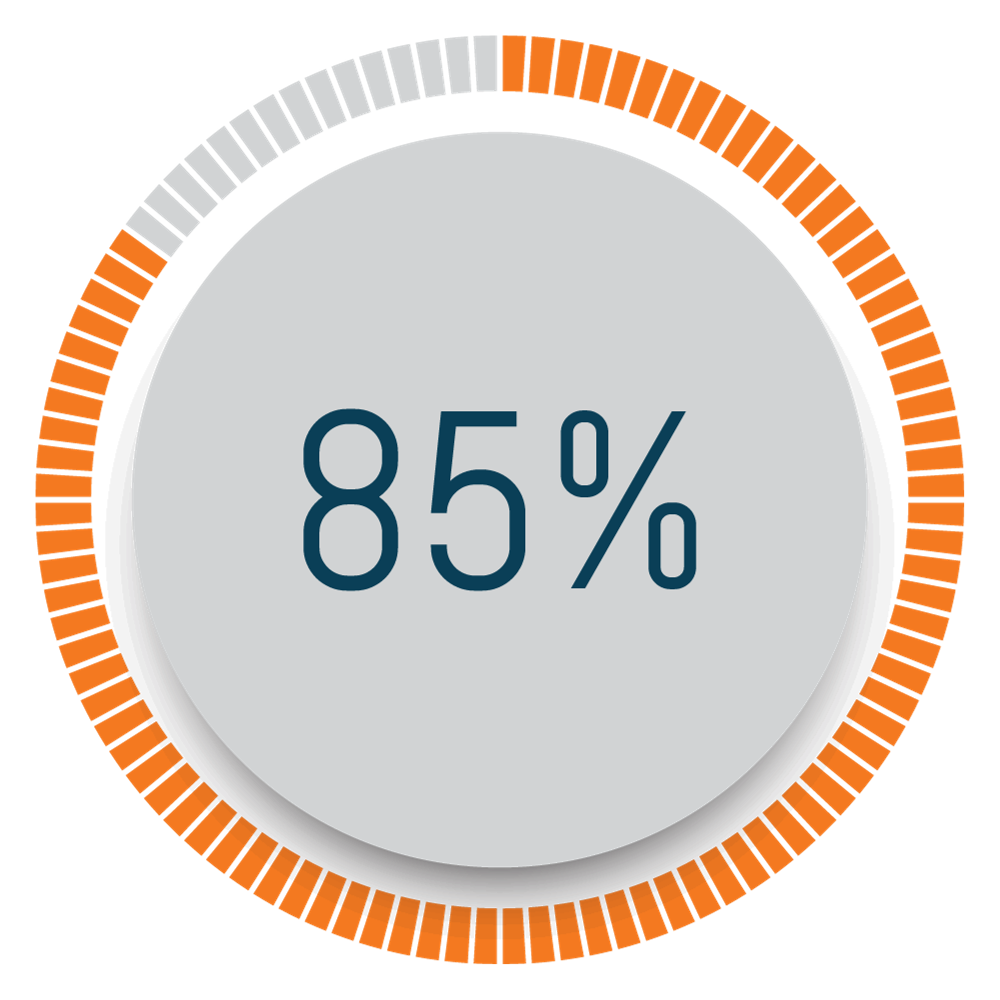In many corporate settings, the prevailing view is that success hinges on effort. Long hours, burnout, and perpetual busyness are worn as badges of honor in a hustle culture. Celebrated figures like Elon Musk have emerged as examples of this relentless work ethos, pushing the boundaries of human endurance to achieve their ambitious goals.
However, as the workplace continues to evolve, employers and employees alike are beginning to recognize the hidden costs of hustle culture. Recent research sheds light on an alternative perspective: striving for 85% effort might be the sweet spot for peak learning and performance.

This article covers hustle culture in depth, critically examines a more sustainable solution—the 85% approach—and provides strategies for its integration into contemporary workplaces.
Pressed for time? Here’s a quick summary…
- Hidden costs of hustle culture: Within a hustle culture, the relentless pursuit of progress often comes at the expense of stress, burnout, and diminished employee well-being.
- The magic number for productivity: Research suggests that optimal learning and performance is achieved when tasks are set with an 85% accuracy target. This measured approach translates to productivity, allowing for more sustainable output while promoting growth.
- Maintaining a high-performing culture: The obvious concern with encouraging less effort is decreased productivity or output. It’s important to remember that the 85% approach is a guide, not a rule. It involves knowing when to give 100% effort and when to dial it back, acknowledging that not every task warrants an all-out sprint.
- Integration into modern workplaces: Integrating the 85% approach into modern work environments can be facilitated by setting realistic goals (such as S.M.A.R.T. goals), breaking large projects into smaller chunks, and adopting time management techniques that balance productivity and well-being.
Hustle Culture At A Glance
The ‘max effort’ mindset that characterizes hustle culture has undergone a significant evolution. Hard work is a historically valued virtue, but in recent years, it’s escalated to new extremes.

With the rise of technology that enables constant connectivity, the lines between work and personal life have blurred, amplifying the pressure to be ‘always on.’ Hustle culture places a premium on productivity, often measured by the quantity of work produced rather than its quality.
Many organizations are coming to terms with the toll hustle culture exacts on employee well-being. The expectation of constant availability and excellence can exacerbate burnout, stress-related health issues, and diminished job satisfaction. Moreover, the demand to outdo oneself can lead to a pervasive fear of failure, stifling creativity and innovation.
While hustle culture may drive short-term gains, its long-term consequences on employees and organizations warrant careful consideration. It raises questions about the sustainability of such an approach and the true measure of success in the modern corporate world.
Why 85% Effort Is The Sustainable Path To Success
In a 2019 research paper, scientists used machine learning to uncover the optimal learning difficulty level. Their neural network, mirroring the human brain, excelled when challenged with tasks set at 85% difficulty. This sweet spot strikes a “Goldilocks” balance: not too easy, not too hard – just tough enough to promote growth.
Sherri Phillips, COO of a Manhattan photography business, demonstrates the power of this new approach. Phillips struggled with perfectionism, constantly berating herself for missing daily goals. When she shifted her focus to achieving 85% success over a week, she not only stuck with her efforts more consistently but also found a spectrum of success that didn’t hinge on binary outcomes.
“We will drain ourselves. It’s a bad strategy. It costs too much.”
Greg McKeown, a business author, public speaker, and leadership and business strategist
The Cost Of Perfection
The relentless pursuit of perfection comes at a hefty cost. Stress, burnout, and diminished well-being often accompany this unattainable goal of perfection. As Steve Magness, an exercise physiologist, points out, even small details can start to feel like existential crises when we care too much.
The Power Of Relaxed Confidence

Krishnamurthy V. Subramanian, an economist and executive director at the International Monetary Fund, embraces the idea of “relaxed confidence” when public speaking. He attests that 85% isn’t slacking—it’s about staying calm when things don’t go exactly as planned.
When faced with unexpected mistakes during a major speech, Subramanian maintained composure, knowing that 85% was more than enough to succeed. He demonstrated adaptability and self-assuredness, a balance that enhances output while maintaining mental well-being.
A Critical Examination: Does 85% Work For Everyone?
While the 85% approach to productivity holds promise, its suitability may vary across roles and industries.
Pros & Cons Across Roles & Sectors
Pros:
- Stress Mitigation: For high-stress roles, aiming for 85% productivity could be a lifeline. This goal mitigates burnout and ensures sustainable performance.
- Encourages Risk-Taking: In creative fields, this approach can foster experimentation and innovation, as it allows for occasional setbacks without compromising the big picture.
Cons:
- Competitive Sectors: In ultra-competitive industries, like tech or sports, settling for 85% might not cut it. Striving for excellence can drive breakthroughs.
- Leadership Roles: Leaders often set the tone. In some cases, 85% might not inspire the necessary drive and commitment from teams.
Addressing Potential Criticisms

A lingering question is whether embracing 85% could inadvertently send the message that mediocrity is acceptable. Shouldn’t employees always strive for 100% excellence?
This concern highlights the need for a nuanced perspective. The 85% approach involves knowing when to give 100% effort and when to dial it back, acknowledging that not every task warrants an all-out sprint. 85% is a benchmark, not a ceiling. It encourages growth without compromising standards.
The Thin Line: Hustle Culture vs. High-Performing Culture
There’s a thin line between hustle culture, characterized by relentless overwork, and a high-performance culture driven by strategic effort. While hustle culture promotes constant busyness, a high-performance culture prioritizes effectiveness.
The 85% approach leans towards the latter, advocating for effectiveness over sheer effort. It recognizes that sustainable high performance is the real goal, rather than exhausting oneself in the pursuit of unattainable perfection.
Making The 85% Approach Work In Contemporary Workspaces
Translating the 85% productivity theory into practice can be a catalyst for sustainable success in modern work environments.
Real-World Integration

- Realistic Goal Setting: When integrating the 85% approach into a daily workflow, start by setting goals that are achievable within a reasonable timeframe. Avoid overambitious objectives that could lead to frustration and burnout. S.M.A.R.T. goals (Specific, Measurable, Achievable, Relevant, Time-bound) allow room for excellence without the burden of perfection.
- Achievable Milestones: Break down larger projects into achievable milestones or smaller tasks. This allows for consistent progress without feeling overwhelmed by the enormity of a project.
- Time Management: Prioritize tasks by significance and implement time management techniques to balance workload with well-being. One technique is the Pomodoro method, where one works in focused intervals followed by short breaks. This can help maintain productivity while preventing mental fatigue.
A Well-Being Perspective
Holistic well-being initiatives have gained traction in contemporary workplaces. In this context, the 85% approach can reduce stress levels, improve work-life balance, and enhance mental health while promoting sustainable productivity. However, it may also face criticism for not pushing employees to their full potential or for not meeting certain industry-specific standards.

The magic of 85% isn’t a one-size-fits-all solution. It’s a lens through which individuals can examine their goals, recognizing that different roles and industries have varying demands. The key lies in knowing when to push the limits and when to strategically reserve energy. Mastering this balance can result in a harmonious blend of productivity and well-being.












